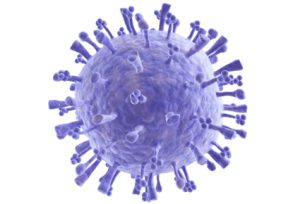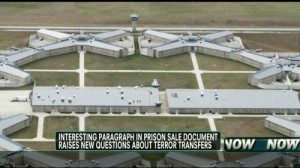The prospect of a movement of Gitmo prisoners to alternate locations in the U. S. has again raised its ugly head, as seen in this article. This action whether based on political or economic interests is one which must be carefully considered. Some years ago I wrote some articles on the dangers associated with such a move.
At one point in my military healthcare career, I was assigned to the Military Disciplinary Barracks (USDB) in Leavenworth KS. and subsequently assigned to the Army Hospital on that Military Post. The area is also the home of a high-profile Federal Prison Facility, between the two are housed some of the most dangerous criminals in the nation and for generations work in these prisons has been a major source of revenue for the community.
To our knowledge, there have been no recent escapes from Leavenworth Lock-ups. One would think that this community would welcome an increase in numbers for their thriving enterprise. The community is occasionally challenged by clusters of prisoners’ relatives and assorted miscreants who follow some of their most celebrated guests. Serious attempts to free the incarcerated did not exist. The community’s faith in the prison system is unshakable. Keeping terrorist detainees behind bars and was not in question.
Their concern is/was the specter of large groups of family and potential terrorist living among them appears to have squelched any related potential for economic gains. The idea of a Gitmo-North in Manhattan received a similar cool reception. The same reaction to a Gitmo-Mid-America (which we understand now has been purchased by the Federal government) poses the same set of concerns expressed by the Good Citizens of Leavenworth KS.
Our immediate concern relates to the Public health and Healthcare sector’s lack of preparedness for the additional threats which accompanies such moves. Hospitals and healthcare locations have long been considered soft and desirable places to use as escape routes. As the healthcare industry scramble to reduce “costs†the reduction of physical safety and security is a target. Violence in the healthcare workplace is four times as great as other service related venues. Threats go up, and physical safety and security go down. Movement of Gitmo detainees to any location in the United States is an “additional self-inflicted risk.â€.
The Fort Leavenworth USDB Policies and Practices for the transfer of hardened criminals from prison site to hospitals and healthcare sites is the world’s best. At the time, everyone was convinced that the hospital had all their bases covered for any event. The hospital’s prison ward was a virtual fortress. Reinforcement security personnel at the USDB were 5 minutes away. Emergency management protocols for the movement of hospitalized inmates called for a two-on-one prison guard to a prisoner when evacuating (in the case of tornado) to the hospital’s basement. When the tornado alert sounded, there were two prisoners in the prison ward and two guards. An anxious call to the USDB for extra guards met with a response that the tornado had resulted in downed trees, and other debris blocked access to the hospital. Fortunately, there were two USDB guards who were recovering from illnesses in the hospital and were physically able to act as escorts.
 Most prisons have limited healthcare delivery capabilities, and it is common practice for local hospitals to contract for the care of inmates when their health condition exceeds the prison’s healthcare capacity. Pre/Post 911, elaborate plots to free incarcerated high profile terrorists have been uncovered and thwarted.
Most prisons have limited healthcare delivery capabilities, and it is common practice for local hospitals to contract for the care of inmates when their health condition exceeds the prison’s healthcare capacity. Pre/Post 911, elaborate plots to free incarcerated high profile terrorists have been uncovered and thwarted.
Hospitals are soft on security and criminals take advantage of the vulnerabilities in the system to escape. One of the lessons learned in the 2009 “Novel Flu†event was that those Hospitals and Healthcare organizations located in proximity to prisons had underestimated the impact of their contract responsibilities to care for these populations and the potential drain on their community health assets. Prison populations are extremely vulnerable to pandemic-like events. A Large number of inmates have multiple disease exposures (HIV, TB, etc.) which with make them at greater risk to evolving infectious diseases than the population in general. During 2009 “Novel Flu†event, prisoners in some jurisdictions were given a higher priority for limited vaccines, over local school districts.
And it is not as if “accidents” do not happen around these facilities. An explosion at the Escambia jail in Pensacola, Florida last year, left two dead, dozens injured and happened on the heels of a twelve-inch downpour, stretching emergency management and healthcare capabilities during the flooding.  The resulting damage left a large hole in the wall of the facility, through which many could have potentially escaped, three inmates who were missing in the chaos, were later accounted for.
The resulting damage left a large hole in the wall of the facility, through which many could have potentially escaped, three inmates who were missing in the chaos, were later accounted for.







0 Comments